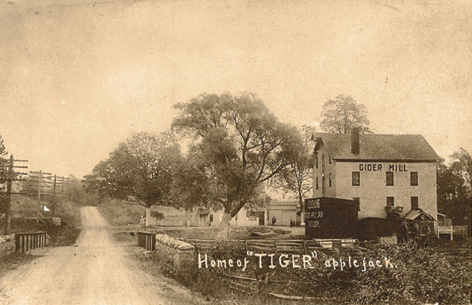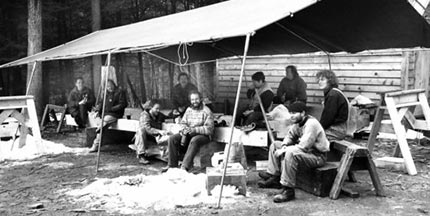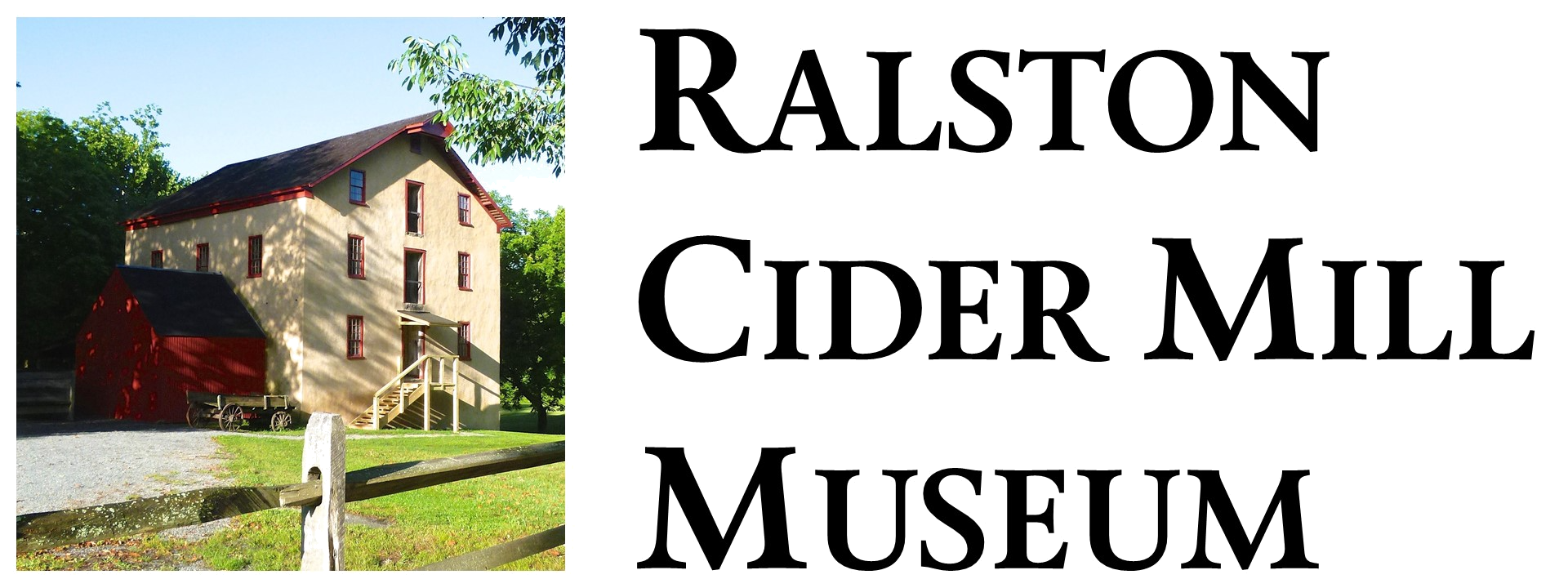History of the Ralston Cider Mill

In 1848 John Ralston Nesbitt, a grandson of John Ralston, and his mother, Mary Ann Nesbitt, constructed a gristmill next to Burnett Brook in Mendham, New Jersey.
The Ralston Historic District which extends from the Mill along Mendham Road West to Ironia Road and down Roxiticus Road was settled and grew around the water-powered industries which developed along the North Branch of the Raritan River. This area was originally known as Roxiticus; but it was not recognized as a town or village. It was primarily a place of mills, although, in the early twentieth century it did have one room schoolhouses and its own Ralston Post Office and a General Store at the corner of Mendham Road West and Roxiticus.

The architecture is that of a traditional grist-mill, common in the mid-Atlantic states from the mid-1700’s into the mid-1800’s. This building is made of stone with a stucco exterior and plaster interior on the upper levels. The heavy timber wood structure is constructed of oak with hemlock plank flooring. A vertical line of center doors is flanked with windows on each level. Above the doors is a sack hoist and projecting roof hood. Four foot thick stone walls form the base of the mill and step back at each level to accept the wood beams. The timbers are joined with mortice and tenon joints.
After falling into the wheel pit, water left the mill thru a tailrace tunnel and back into the brook. Cogs on the side of the wheel turned a pinion gear on a drive shaft on each side of the wheel. These drive shafts ran heavy milling stones on the level above.
Milling operations at the Nesbitt Mill ended in 1904 when John Nesbitt died of an apparent heart attack in the upper level of the mill. Also, the working life of the water wheel ran out. Local grist mills become uneconomical when the spread of railroads made Minneapolis style white flour readily available.
In 1910 Thomas Laughlin moved his Tiger Apple Jack Distillery from Bernardsville Road to larger facilities at the Nesbitt Mill. He modified the operation to produce apple jack and peach brandy.

The old wooden wheel and grinding stones were removed leaving only the wooden shift of the wheel. A new water turbine replaced the wheel. The new drive shaft that is supported by the old wooden wheel powers the conveyors, grater and presses on the floors above. The smaller steel rod next to the drive shaft is operated from above. It rotates the blades inside the turbine to turn it on and off and to vary the speed. A concrete Penstock now connects the pipe from the head race directly to the turbine. The original trough is demolished. Stone walls on the lower level were partially demolished and new brick and concrete walls were built to support steel beams.

On the second level, the power is transferred to the main drive shaft. Pulleys and belts drive the conveyer that brings the fruit to the grater on the third level. The resulting pomace then drops into a hopper and then into racks to form a cheese, several of which are stacked on a cart. A completed stack is then transferred by trolley to the knuckle press or the screw press. Shifting the belts, activates the press to express apple juice which then flows to large cypress vats for fermentation. Resultant hard cider was either aged and shipped in barrels, or distilled to make Applejack. By the time the Ralston Cider Mill began production, the brandy industry in New Jersey was more than 130 years old. By 1830, Morris County had 53 working brandy stills, second only to Hunterdon. In 1850, a quarter of Mendham’s 171 farms reported income from apples. The industry peaked at the turn of the century with 29,142 barrels of cider and 6,276 barrels of vinegar. By 1899 New Jersey was the national leader in cider production, comprising 23% of the US total.
Cider mills were productive and profitable until the Volstead Act of 1919 mandated prohibition. Many distilleries closed and many were dismantled. A hidden still in this mill enabled production of applejack thru prohibition. The property was purchased in 1929 by the Fornaro Family who operated the mill until 1938.
Restoration
“For the next several decades the building [Ralston Cider Mill] sat idle with weather taking its toll. Large sections of the roof failed, floors collapsed and the heavy machinery started to succumb to gravity. The roof was repaired several years ago but nothing was done to the structure or machinery inside the mill. From the photos you can see the extent of the deterioration inside the mill that had taken place once the building was abandoned. After the roof failed the floor structures were greatly weakened by exposure to the elements. When we started work the building was very unstable and quite dangerous. Our first priority was to create a safe working environment.”
Beginning in 2004, the Ralston Cider Mill has been extensively restored. Much of the structural and machine restoration was conducted by Rondout Woodworking of Saugerties, N.Y.

Rondout Woodworking, led by James Kricker, is a unique group of master woodworkers located in Saugerties, NY. Their goal is to deliver a level of craftsmanship that compliments the skills of the 17th to 19th century millwrights, boat builders, and timber framers who originally built the historical structures they work on. Their website provides some wonderful photos and details about their work at the Ralston Cider Mill.
Click here for pre-restoration photos
Click here for post-restoration photos**
**When viewing gallery, hover cursor over side photos to see them in full size.
